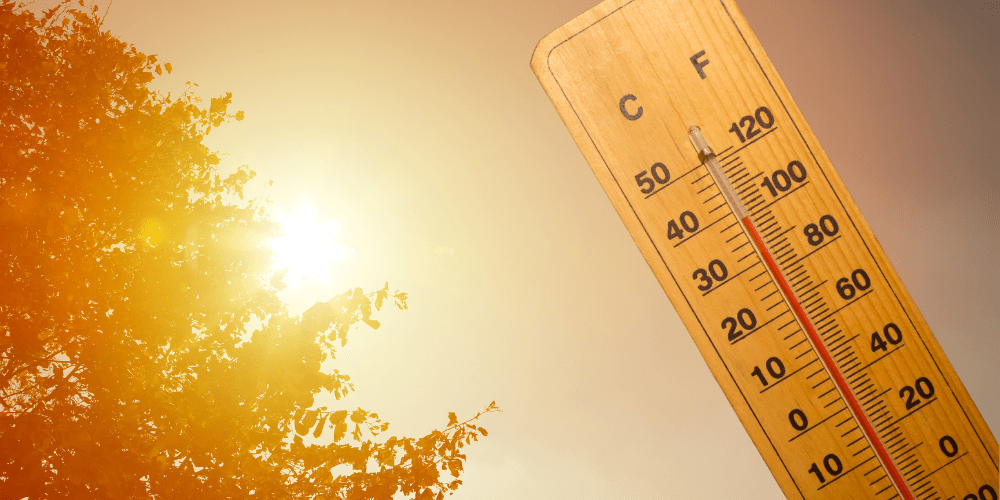
MADISON – As temperatures climb and the summer season begins, it’s important to stay aware of the dangers of extreme heat. June 7 is Heat Awareness Day in Wisconsin and ReadyWisconsin is encouraging everyone to take steps to prevent heat-related illnesses or deaths.
“Heat can be very dangerous, so it’s important to take precautions when temperatures rise,” said Wisconsin Emergency Management Administrator Greg Engle. “Whether working, playing, or enjoying time outdoors, we need to take extra care on these hot days.”
The combination of hot weather and high humidity can quickly cause heat-related illnesses, such as heat stroke or heat exhaustion. The National Weather Service (NWS) issues advisories for high heat to help warn people of potential dangers.
“The biggest issues arise from heat when it lasts for multiple days,” said NWS Milwaukee Warning Coordination Meteorologist Tim Halbach. “Take some time now to help out neighbors who may need assistance. Pay attention to the latest forecasts to stay aware of future heat waves which could last for more than a day.”
When hot weather and high humidity hit at the same time, people of all ages are at risk of getting heat-related illnesses such as heat exhaustion, stress, or stroke. In 2022, 14 heat-related deaths occurred in Wisconsin, according to preliminary data from the Wisconsin Department of Health Services (DHS). More than 700 Wisconsinites also visited emergency rooms for heat-related illnesses last year.
“Extreme heat affects more Wisconsinites than any other natural disaster, and every single heat-related death is preventable,” said Paula Tran, DHS state health officer. “That’s why we and local partners are redoubling our efforts to find new ways to support people who are most at risk of getting ill during heat waves – those who are very young or old, living with existing health conditions, living with disabilities, or living, working, or active outdoors.”
As Wisconsin’s changing climate brings new and more unpredictable weather trends, health risks from heat are also changing. Across the state and especially in cities, overnight temperatures are getting hotter, so people without access to air conditioning or cool basements can’t always rely on cooler nights to recover from hot days, according to Tran.
ReadyWisconsin and DHS recommend following these tips to beat the heat and stay safe during heat waves:
- Stay informed – Pay attention to local weather forecasts and extreme heat alerts.
- Find cool spaces – Remain inside air-conditioned buildings as much as possible during the hottest parts of the day. Call 2-1-1 to find an accessible cool place near you such as libraries or community centers.
- Stay cool at home – If you don’t have air conditioning or a basement, take a cool shower, soak your feet in cold water, or place a cool, wet cloth on your forehead. Keep your windows covered to avoid direct sunlight.
- Stay hydrated – Drink plenty of fluids and avoid alcohol, caffeinated and high-sugar drinks. Don’t wait until you’re thirsty to drink. Don’t take salt tablets unless directed by a medical professional.
- Avoid hot cars – Never leave a child or pet unattended inside a parked car. On an 80-degree Fahrenheit day, temperatures in a vehicle parked in direct sunlight can climb almost 20 degrees in just 10 minutes.
- Keep pets safe – Limit their time outdoors and make sure they have access to fresh drinking water.
- Stay aware – Watch for early signs of heat-related illnesses such as dizziness, headache, fatigue, and muscle cramps. Seek medical attention right away if symptoms worsen or you develop symptoms of heat stroke.
- Check in with loved ones and neighbors during heat waves, especially if they last a few days.
During periods of extreme heat, each NWS Forecast Office uses multiple tools to assess the
potential for heat-related health issues. One of those tools is the Heat Index which measures how hot it really feels when relative humidity is factored in with the actual air temperature. The NWS
Forecast Offices uses these tools to issue the following heat-related alerts as conditions warrant.
- Excessive Heat Warning: An excessive heat warning is issued when the maximum heat index temperature is expected to be 105°F or higher and not go below 75°F for a Heat Index the morning before or after. Check in with loved ones and neighbors during heat waves, especially if they last a few days. If the maximum heat index will be between 100-104°F for four days in a row, a warning will be issued.
- Excessive Heat Watches: Heat watches are issued when conditions are favorable for an
excessive heat event within the next one to three days. - Heat Advisory: A heat advisory is issued when the heat index
temperature is expected to be 100°F or higher. If the maximum heat index will be between 95-99°F for four days in a row, then an advisory will also be issued. - Outlooks: The outlooks are issued when the potential exists for an excessive heat event in the next three to seven days.
Find more tips on preparing for heat waves at http://readywisconsin.wi.gov or preventing heat-related illnesses at https://www.dhs.wisconsin.gov/climate/weather/heatillness.htm.
For more tips on emergency preparedness, head to http://readywisconsin.wi.gov. You can also follow ReadyWisconsin on Facebook (www.facebook.com/readywisconsin), Twitter (www.twitter.com/readywisconsin), and Instagram (www.instagram.com/readywisconsin).
Learn more about heat safety information and forecast tools at https://www.weather.gov/safety/heat
Downloadable PDF version here: 2023 Heat Awareness Day Packet

